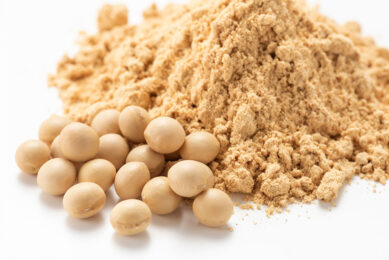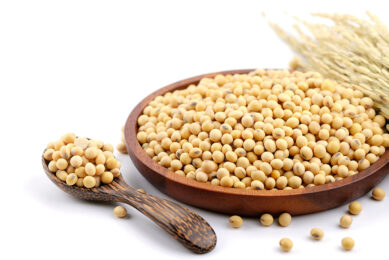Functional proteins in pelleting
Another area of encouraging research into functional proteins examines their role in improving pellet quality. It is a commonly held belief that pellet quality is improved by gelatinizing the starch during the pelleting process. However, the data to support this belief is questionable at the very least.
Another area of encouraging research into functional proteins examines their role in improving pellet quality. It is a commonly held belief that pellet quality is improved by gelatinizing the starch during the pelleting process. However, the data to support this belief is questionable at the very least.
Two studies, conducted by Briggs et al. (1999, Feed Tech 3:7) and Woods (1987; Ani. Feed Sci. Tech 18:1-17) would suggest that proteins, especially proteins that have not been denatured, significantly impact the durability of animal feed pellets.
The research conducted by Briggs and co-workers demonstrated that as soybean meal in two forms significantly improved the durability of corn pellets (see table). While the study needs to be carefully examined, the data would suggest that functional proteins play a critical role in the formation of durable pellets.
Table 1. Influence of two forms of soybean meal on pellet quality (Briggs et al.)
Experimental Treatment
| |||
Item
| I
| II
| III
|
Ingredient, %
| |||
Corn
| 94
| 73
| 63
|
Soybean meal
| –
| 24
| –
|
Expeller soybean meal
| –
| –
| 34
|
Soybean oil
| 3
| –
| –
|
Micro ingredients
| 3
| 3
| 3
|
Dietary fat, %
| 6.2
| 3.1
| 2.9
|
KSU durability, %
| 42.2
| 67.7
| 86.3
|
Fat addition
One of the criticisms of the study by Briggs and co-workers is that the diets are not iso-caloric. Richardson and Day (1976) demonstrated that applied fat has a significant impact on pellet quality. Therefore, the data in the table is confounded by inclusion of soybean oil (3%) to the corn control.
However, from a practical perspective, pelleting straight corn is difficult at best, so it is reasonable to expect that some lubrication was required to successfully pellet the diet.
The take home message is that, regardless of the use of soybean oil, there was a significant boost in pellet quality when functional proteins were added to the diet.
Furthermore, the use of expeller soybean meal, which contains proteins in their native state, produced pellets with the highest durability.
Previous to this work, Woods (1987) demonstrated the same effect: pellet quality is maximized by using ingredients that contain high levels of functional proteins in the native state.
In fact, Woods research demonstrated that functional proteins play a more critical role in optimizing pellet quality compared to starch that has been pre-gelatinized. The bottom line is that the work conducted by Briggs et al. and Woods (1987) strongly point to the role of functional proteins in optimizing pellet quality.
Intuitively, many of us in the feed industry recognize this fact; how many of us have seen a boost in pellet quality when we include wheat by-products in the ration?
Wheat contains one of the most functional proteins, gluten, in its’ endosperm. When heated and hydrated, gluten protein begins to exert its’ significant functional muscle.
Are functional proteins the key to the perfect pellet? Not entirely; there are a lot of factors that contribute to good quality pellets. However, from the perspective of a cereal chemist, it is difficult to argue that functional proteins play a more active role than starch.











